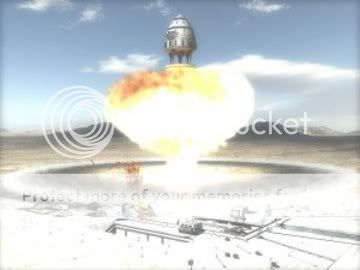It looks like you're using an Ad Blocker.
Please white-list or disable AboveTopSecret.com in your ad-blocking tool.
Thank you.
Some features of ATS will be disabled while you continue to use an ad-blocker.
6
share:
Hey ATS, i thought this was interesting and worth a post. (To mods, if in wrong forum please move, sorry for the incovenience).
Sorry for the extensive quoting, but i felt that all these points were important and interesting. With this technology, it could eliminate the need to use fuel to push a rocket up and through the spheres. I think it is an awesome idea.
Now, if only we could buld a Mass Relay
www.physorg.com...
The proposed launch system, called Startram, doesn't use rockets or rocket fuel, but instead is based on the concept of a mass driver. Also known as an electromagnetic catapult, a mass driver acts like a coilgun to magnetically accelerate a magnetized holder containing a payload.
according to its designers, Startram uses available technology and is commercially feasible, suggesting that it could potentially be built. The developers, Dr. James Powell, who co-invented superconducting maglev trains, and Dr. George Maise, an aerospace engineer who previously worked at Brookhaven National Laboratories, have as much experience as anyone to push the idea forward.
The researchers have proposed two different models: a cargo-only version (Generation 1), which would cost about $20 billion and take about 10 years to build, and a passenger version (Generation 2), which would cost about $60 billion and would need about 20 years for completion. While the cargo-only version could be built up the side of a tall mountain without the need for levitated tubes, the passenger version would require levitated tubes to hold the track up.
the Generation 2 magnetically levitated track would run about 1,609 km (1,000 miles) long, heading upward to an altitude of about 20 km (12 miles). While the track would be securely tethered to the ground, it would be held in mid-air completely by magnetic levitation. The entire track would be enveloped in a vented vacuum tunnel to avoid sonic shock waves that result from the spacecraft's hypersonic speeds of up to 9 km/sec (5.6 miles/sec). Once it exits this track, the spacecraft would be in position to reach LEO.
Sorry for the extensive quoting, but i felt that all these points were important and interesting. With this technology, it could eliminate the need to use fuel to push a rocket up and through the spheres. I think it is an awesome idea.
Now, if only we could buld a Mass Relay
www.physorg.com...
reply to post by daaskapital
whoa,
sorry,
but whoa.
That is the coolest idea I have heard in a long time. Lets build it!
whoa,
sorry,
but whoa.
That is the coolest idea I have heard in a long time. Lets build it!
It says in the article the tube would be in vacuum to stop sonic shock interference but I'm curious what barrier would be used at the end to separate
the... ooooh.
How high up does this thing go?
What's atmospheric pressure at 20 kms?
How high up does this thing go?
What's atmospheric pressure at 20 kms?
edit on 19-3-2012 by boncho because: (no reason given)
the best thing about this is that its not Nasa, so im excited
god dam double post, im still excited though
edit on 19-3-2012 by jazzguy because: (no reason given)
The maintenance costs for that thing would be massive, fcking 1000 miles of track? thats crazy.
I've always liked the idea of the Space Elevator all though the ride would most likely be
quite boring compared to a maglev track. Here's some concept pics though:


Of course, if it became untethered.......watch out as it wraps itself around the earth at orbital speeds! BOOM. hehe


Of course, if it became untethered.......watch out as it wraps itself around the earth at orbital speeds! BOOM. hehe
As the developers explain, building such a system is within reach of current technology, with the biggest challenge being one of scale. Even though the velocities for the system would need to be about 50 times faster than today's maglev trains (which travel at speeds of up to 600 km/hr [373 mph]), much of the engineering is the same. Also, researchers at Sandia National Laboratories have performed an initial “murder-squad” investigation of the concept and found no obvious flaws.
Yeah, the problems start when scaling up takes place. Their cost reductions obviously don't include installation and maintenance costs. Plus, it just wont work. How do you keep a structure intact that is 20 km high?
NASA has found that scaling up hypersonic scramjet technology impractical, and that is a lot less complex that this supercooled (somehow) structure.
I just think their costs projections are way off in reality.
edit on 19-3-2012 by Illustronic because: (no reason given)
reply to post by daaskapital
I thought that this was planned for the moon surface, save on fuel launch straight up and out, may have been a different story or NASA's version
Wee Mad
I thought that this was planned for the moon surface, save on fuel launch straight up and out, may have been a different story or NASA's version
Wee Mad
reply to post by weemadmental
Yes, on the moon the engineering would be a lot simpler to do: you are already surrounded by a vacuum, the escape velocity from the moon is a lot smaller, and there would not be a need to raise the track rail so high like on Earth.
Getting things off the moon, or other small bodies is easier than getting things off of the Earth.
We could always go back with this old idea here:
Project Orion
But I think that there would be some environmental issues!
When they say "Clear the launch pad." you'd better make sure you've REALLY cleared the launch pad!

Yes, on the moon the engineering would be a lot simpler to do: you are already surrounded by a vacuum, the escape velocity from the moon is a lot smaller, and there would not be a need to raise the track rail so high like on Earth.
Getting things off the moon, or other small bodies is easier than getting things off of the Earth.
We could always go back with this old idea here:
Project Orion
But I think that there would be some environmental issues!
When they say "Clear the launch pad." you'd better make sure you've REALLY cleared the launch pad!

I know one of the principle developers of this concept in the 1990s. Very smart guy and very convinced that it is a much cheaper way of getting
material into space than using rockets.
And people say scientists have no imagination!
And people say scientists have no imagination!
edit on 3/19/2012 by Phage because: (no reason given)
reply to post by eriktheawful
Someone (Niven maybe?), wrote a novel which began with terrorists blowing up the base of a space elevator anchored in South America.
Yikes.
Someone (Niven maybe?), wrote a novel which began with terrorists blowing up the base of a space elevator anchored in South America.
Yikes.
new topics
-
Thousands of Anti-Semitic People Protest Israel's government in Tel Aviv
Middle East Issues: 9 minutes ago -
Mysterious Spiral 'UFO' Sightings Reported Across US, Europe
Aliens and UFOs: 7 hours ago -
The Dark Pyramid of Alaska and the Why Files take on the subject
Whistle Blowers and Leaked Documents: 10 hours ago
top topics
-
The Dark Pyramid of Alaska and the Why Files take on the subject
Whistle Blowers and Leaked Documents: 10 hours ago, 10 flags -
Israeli strikes on southern Gaza city of Rafah kill 22, mostly children, as US advances aid package
Middle East Issues: 17 hours ago, 5 flags -
Mysterious Spiral 'UFO' Sightings Reported Across US, Europe
Aliens and UFOs: 7 hours ago, 2 flags -
Thousands of Anti-Semitic People Protest Israel's government in Tel Aviv
Middle East Issues: 9 minutes ago, 0 flags
active topics
-
Thousands of Anti-Semitic People Protest Israel's government in Tel Aviv
Middle East Issues • 0 • : gortex -
Zionists of ATS assemble
Political Issues • 163 • : cherokeetroy -
Israeli strikes on southern Gaza city of Rafah kill 22, mostly children, as US advances aid package
Middle East Issues • 95 • : FlyersFan -
The Acronym Game .. Pt.3
General Chit Chat • 7793 • : F2d5thCavv2 -
SEC shuts down Trump Media auditor, BF Borgers, over fraud
Mainstream News • 55 • : Dandandat3 -
Russia Ukraine Update Thread - part 3
World War Three • 5755 • : F2d5thCavv2 -
Shocking moment four men 'try to force Jewish pedestrian into car boot' in North London
Breaking Alternative News • 89 • : FlyersFan -
Really Unexplained
Paranormal Studies • 72 • : andy06shake -
The Vaccine Injured
Medical Issues & Conspiracies • 19 • : PrivateAngel -
Wounded Orangutan seen using a Plant as Medicine for the First Time
Fragile Earth • 32 • : andy06shake
6
